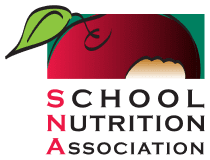 Welcome to Season 3, Episode 5
Welcome to Season 3, Episode 5
In this episode of “School Food for Thought,” host Patti Montague, CEO of the School Nutrition Association (SNA), sits down with Cindy Long, Deputy Undersecretary for Food, Nutrition, and Consumer Services at the USDA, to discuss the updated school nutrition standards and their impact on meal programs nationwide. From menu planning flexibility to funding advocacy, Patti and Cindy explore how collaboration and community engagement are driving innovation in school meals. Learn how these changes prioritize healthier, more inclusive options while ensuring schools have the tools they need to succeed.
Tune in for actionable insights and inspiration on navigating the future of school nutrition.
Host: Patricia Montague, FASAE, CAE, SNA Chief Executive Officer
Speakers: Cindy Long, USDA Deputy Under Secretary for the Food and Nutrition Service (FNS)
Sponsored by
Highlights from the “School Food for Thought” Podcast
The USDA’s updated school nutrition standards are shaping the future of meal programs nationwide. These changes aim to balance nutritional quality with practical implementation, providing schools with the flexibility and tools they need to succeed. In this episode of “School Food for Thought,” Patti Montague, CEO of the School Nutrition Association (SNA), sits down with Cindy Long, Deputy Undersecretary for Food, Nutrition, and Consumer Services at the USDA, to discuss how these standards are evolving and what they mean for school nutrition professionals.
Key Updates to Nutrition Standards
- Whole Grains and Flavored Milk
- Schools will primarily serve whole grain-rich products, with flexibility for up to 20% enriched grains.
- Flavored milk remains available, now with stricter sugar content limits.
- Sodium and Added Sugars
- Sodium limits will phase in over three years, giving schools time to adjust.
- New caps on added sugars target breakfast items like cereals and flavored milk to promote healthier choices.
- Buy American Provisions
- A phased cap on non-American products strengthens local supply chains, starting at 10% and decreasing to 5% over six years.
Collaborative Implementation and Advocacy
Cindy highlights the importance of stakeholder input in shaping these standards. Feedback from school nutrition professionals has been key to ensuring the updates are practical and achievable.
To navigate funding challenges, Cindy and Patti urge professionals to share their stories with lawmakers. Personal advocacy is vital to securing resources like reimbursement rate adjustments and universal meal programs.
Celebrating Progress and Inspiring Innovation
Sharing success stories, both online and in local communities, is critical for building pride and inspiring further advancements in school nutrition. Cindy notes that listening sessions reveal optimism and readiness among professionals to embrace these changes and continue improving student meals.
Key Takeaways for School Nutrition Professionals
- Stay Informed: Use USDA resources and maintain communication with state agencies.
- Advocate: Share your program’s successes with lawmakers to support funding initiatives.
- Celebrate Achievements: Highlight progress to build pride and inspire innovation.
With collaboration, advocacy, and creativity, the new standards pave the way for healthier and more inclusive school meal programs.
Ready for more insights? Watch the full episode on YouTube to dive deeper into this impactful discussion.



